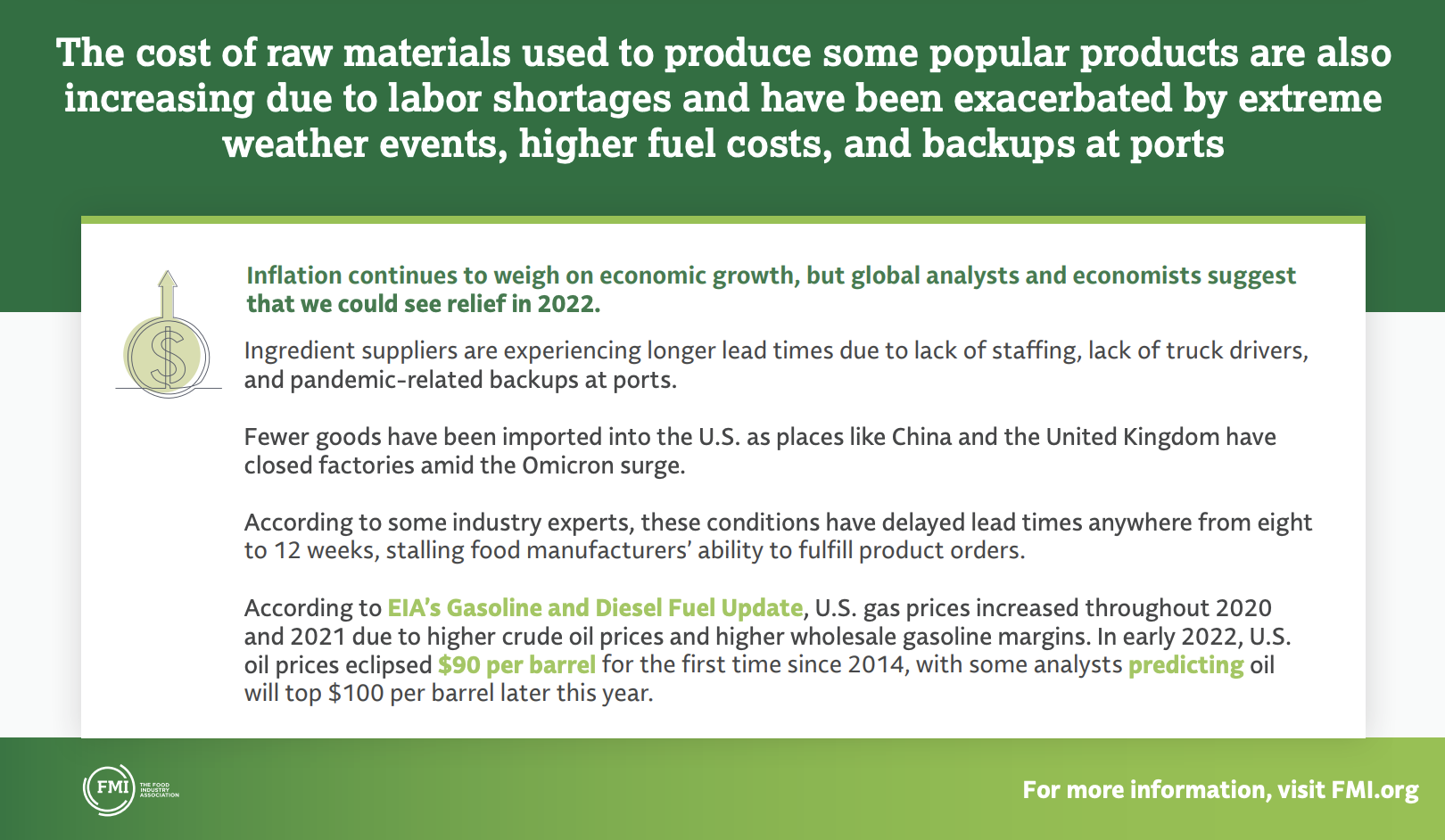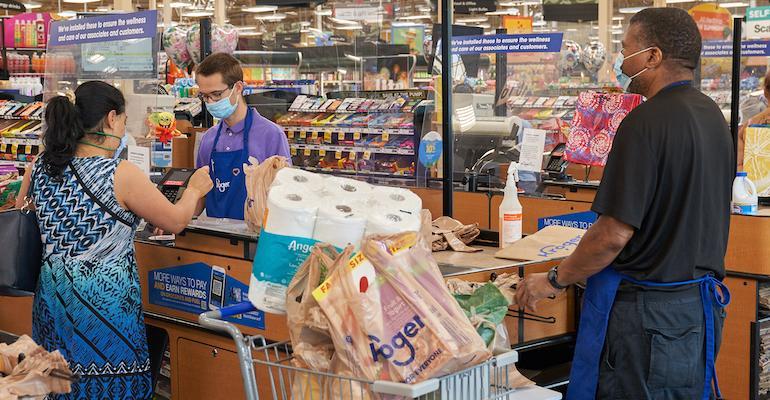As we sit midway through Q1 of 2022, the food industry continues to grapple with inflation, complicated supply chain challenges, and record-setting consumer demand for food at home. Considering that these pressures are not anticipated to subside immediately, the food retail industry is working to address these issues in both the short and the long term.
Last week, FMI-The Food Industry Association presented a webinar hosted by president Leslie Sarasin and featuring Dr. Ricky Volpe, Associate Professor of Agribusiness at Cal Poly, where he specializes in food retail and supply chain management, transportation and logistics, and food prices and data analysis. The two shared their insights on the challenges facing the food industry today, and Dr. Volpe offered his thoughts on ways to “future-proof” the food supply chain, using many of the lessons the industry learned from the impact of the COVID pandemic.

According to Dr. Volpe (left), the pandemic revealed to us that the supply chain, while complex and very efficient, has become somewhat rigid, which led to many of the issues and challenges that arose during the onset of COVID. As he said, “I don't think it would come as a surprise to anybody to learn that most agents in the food supply chain, from production to manufacturing to retail, they're not big fans of uncertainty. So they're going to take steps to reduce uncertainty and to reduce transaction costs. And a lot of that is done through contractual arrangements and long-term agreements and that sort of things in terms of the buying and selling of commodities and foods.”
For instance, he noted how growers, shippers, producers, processors and manufacturers became specialized over the last 10, 15, 20 years, and even longer in terms of focusing on more of the food retail side of things versus the foodservice side of things versus the institutional side of things. But, he said, we learned when COVID hit that it is really difficult to have food, labor and other inputs move from one marketing channel to another.
“When COVID hit, foodservice more or less shut down overnight, and then we had this incredible problem where there was way too much food and unusable labor in the foodservice marketing channel and then food shortages and very acute labor shortages in the retail sector,” Dr Volpe recalled.
A lot of that was driven by rigidity and inflexibility, Dr. Volpe concluded. “One of the major recommendations that I have to anyone who will listen moving forward is that flexibility, adaptability, these things are going to be really important in the future because we don't know when the next shock is going to come, we don't know what the next challenge is going to be. But I think it's incumbent on sellers and producers of all stripes of the food supply chain to maintain a Rolodex of potential outputs and buyers of their product across marketing channels in order to keep those pathways open and to make sure that someway somehow that food is not going to go to waste, right, it's not going to get turned back in the ground, it's going to eventually get to the people who need it and be used and moved by the people who are being paid to do so.”
Sarasin agreed, adding that the early days of the pandemic illustrated the challenges of having foodservice product that wasn't particularly usable in retail settings. “It is so important for us to be prepared for that,” she said, but noted that also “will require some involvement from the federal and state governments when it comes to regulatory environments as well, because how the product is used and how it's labeled and that sort of thing is driven by regulatory constraints.”
Misconceptions about high prices
Inflation and high grocery prices are on every consumer’s mind these days, but Dr. Volpe had a message for retailers grappling with negative shopper feedback to prices in their stores.

Food price inflation is inevitable, he said, but noted that the short-term acute significant hikes in food prices due to COVID have mostly been corrected, and compared those to grocery prices during other challenging times such as the food price crisis of 2007-09 and the Midwest drought of 2011-12.
“For many food categories, the food prices that we saw back then were significantly higher than the food prices that we saw and continue to see during COVID,” he said. “It's not to say that we're not seeing significant inflation, that consumers are not feeling it, but I think that the message that is not shared enough is the idea that it's really, really important to keep in mind that if you control for the changing value of the U.S. dollar, meaning you measure food prices in real terms, most food prices are down and down in a big way in the long term. Things like milk, eggs, bread, bananas, chicken, all of these foods are significantly cheaper today than they were 20, 30, 30, 50 years ago.”
His suggestion to combat consumer backlash to prices? “I personally would like to see more messages coming from food retailers and manufacturers to help educate consumers and them to say, ‘Hey, your dollar is going further to buy food, to feed your family, to meet dietary guidelines, whatever, today than it did 20 years ago.’ The cost of acquiring, processing, adding value to, and moving food and storing food, all of these costs are down in the long term. So, sure, we're going to have bumps in the road, we're going to have inflation here and there, but the food is more affordable now than it was a generation ago. That's important that people know that because I think it's going to help reduce concerns about the availability and affordability.”
For more information on factors in the food supply chain that affect pricing and the specific impact of COVID on food prices, see FMI’s web report on “The Fundamentals of Food Prices: Costs, Consumer Demand and COVID-19.”





